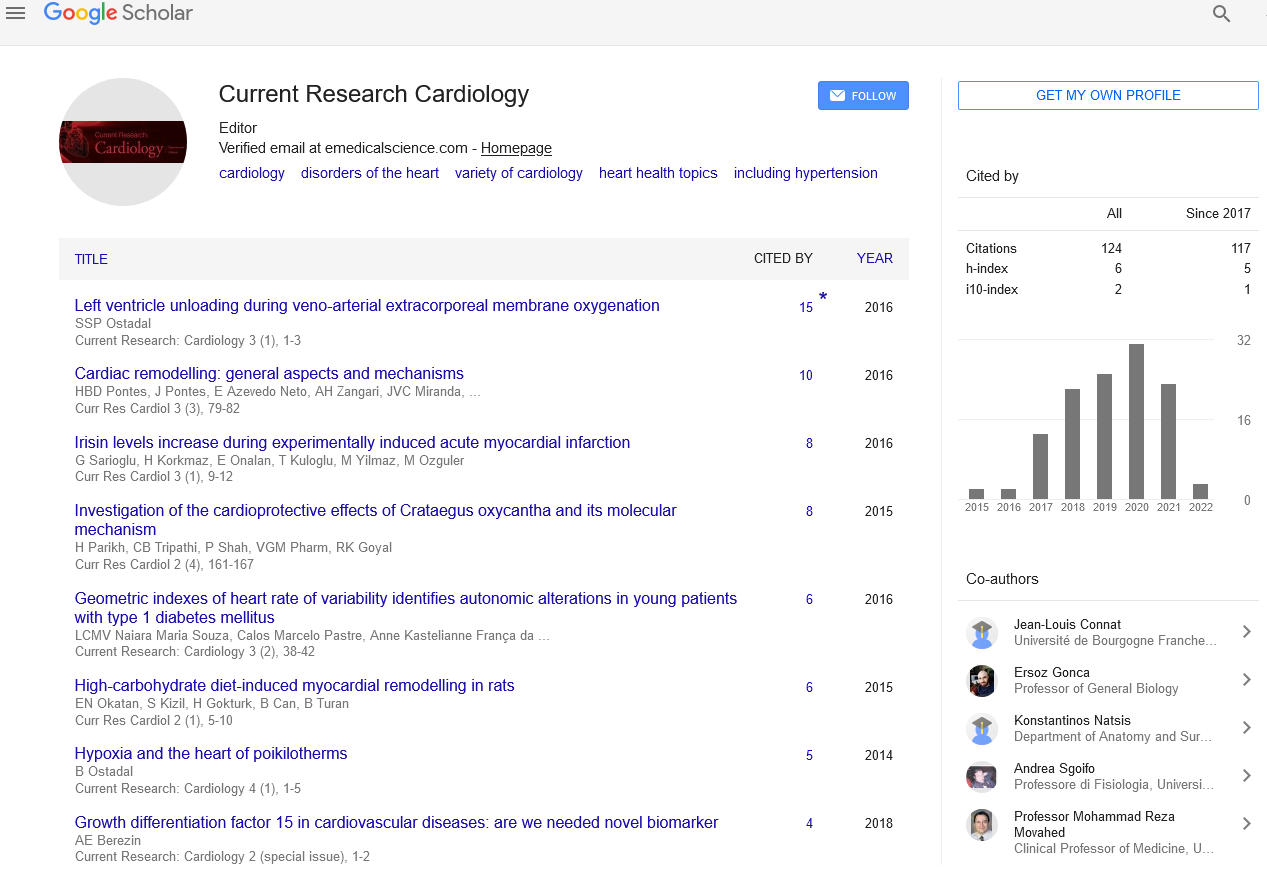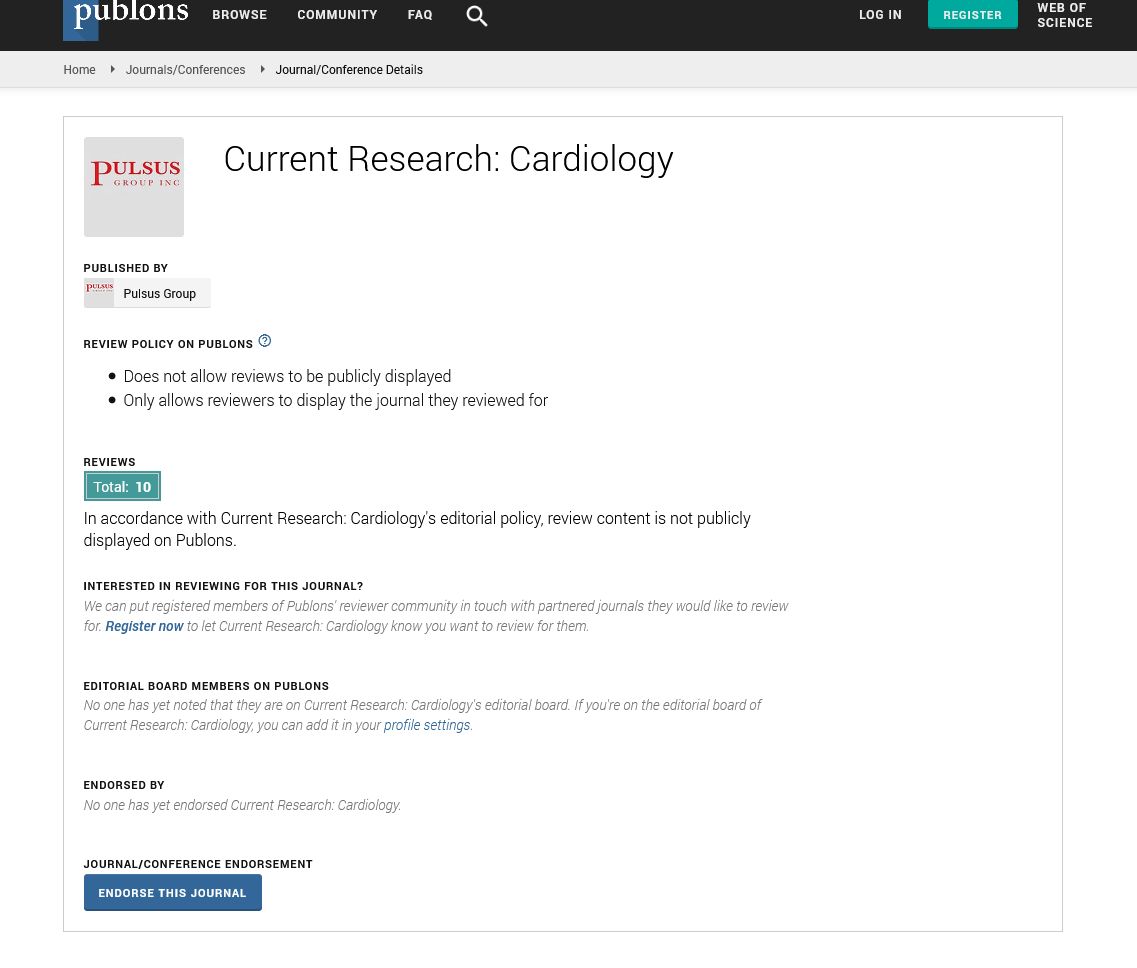Pathogenesis and epidemiology of hypertension
Received: 01-Sep-2021 Accepted Date: Sep 15, 2021; Published: 22-Sep-2021
Citation: Ollie E. Pathogenesis and epidemiology of hypertension. Curr Res Cardiol 2021;8(2): 4.
This open-access article is distributed under the terms of the Creative Commons Attribution Non-Commercial License (CC BY-NC) (http://creativecommons.org/licenses/by-nc/4.0/), which permits reuse, distribution and reproduction of the article, provided that the original work is properly cited and the reuse is restricted to noncommercial purposes. For commercial reuse, contact reprints@pulsus.com
Description
Hypertension, also known as high blood pressure or elevated blood pressure, is a condition in which the blood vessels remain at high pressure. In the vessels, blood is transported from the heart to all parts of the body. Every time the heart beats, it pumps blood into the vessels. Blood pressure is created by the force of the blood pushing against the walls of the blood vessels (arteries) as the heart pumps it. The higher the pressure, the harder the heart has to pump.
High blood pressure is a serious condition and can increase your risk for heart, brain, kidney, and other diseases. It is one of the leading causes of premature death worldwide, with more than 1 in 4 men and 1 in 5 women in more than 1 billion people suffering from the disease. The burden of hypertension is felt disproportionately in low and middle-income countries, where two-thirds of cases are found, primarily due to increased risk factors in these populations over the past decades.
You can have high blood pressure for years without symptoms. Uncontrolled high blood pressure increases your risk for serious health problems, including heart attacks and strokes. Fortunately, high blood pressure can be easily detected. And once you know you have high blood pressure, you can consult your doctor to control it. Most people with high blood pressure have no signs or symptoms, even when their blood pressure levels reach dangerously high levels. Some people with high blood pressure may have headaches, shortness of breath, or nosebleeds, but these signs and symptoms are nonspecific and usually do not appear until the high blood pressure has reached a serious or life-threatening stage.
Modifiable risk factors include an unhealthy diet (excessive salt intake, a diet high in saturated fatty acids and trans-fatty acids, low consumption of fruits and vegetables), lack of exercise, tobacco and alcohol consumption, and being overweight or obesity. Non-modifiable risk factors include a family history of high blood pressure; people over 65 years of age and comorbidities such as diabetes or kidney disease. High blood pressure is known as the "silent killer." Most people with high blood pressure are unaware of the problem, as they may not have warning signs or symptoms. For this reason, regular blood pressure measurements are essential. When symptoms do occur, they can include morning headaches, nosebleeds, irregular heartbeat, blurred vision, and ringing in the ears.
Severe high blood pressure can cause tiredness, nausea, vomiting, confusion, anxiety, chest pain, and muscle tremors. The only way to detect high blood pressure is to have your blood pressure measured by a doctor. Blood pressure measurement is quick and painless. Although people can measure their own blood pressure with automated devices, evaluation by a healthcare professional is important to assess risk and associated diseases. Many people with high blood pressure can lower their blood pressure within a healthy range or keep their blood pressure within a healthy range by changing their lifestyle. Talking to your health team about 150 minutes of physical activity, a week quitting smoking, eating healthy, even limiting sodium (salt) and alcohol, maintaining healthy weight, and Managing stress helps you from preventing the rising of blood pressure.






